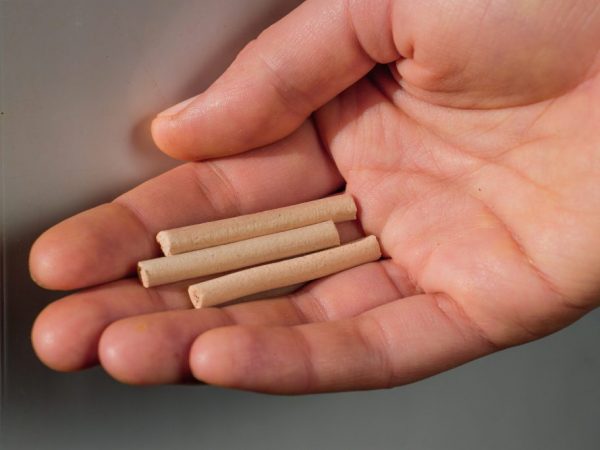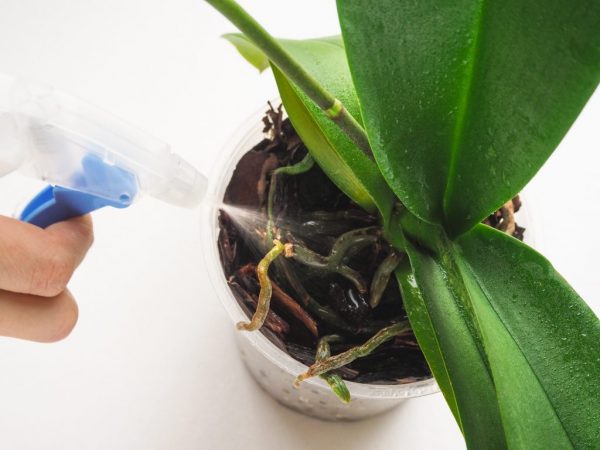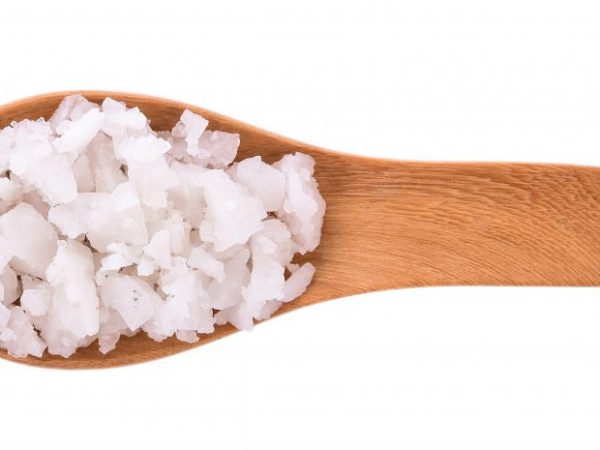Suitable fertilizers for orchids
In order for the orchid to grow well and bloom for a long time, you need to feed it periodically. You can buy special preparations or make your own fertilizer from natural ingredients. The article indicates which fertilizers for the orchid are important to use and what is the best way to feed it at home.
- Why fertilize
- Fertilization features
- How often to fertilize
- Fertilizer use rules
- Popular fertilizers
- Fertilizer selection
- Traditional methods of fertilizing orchids
- Milk
- Tea
- Potatoes
- Molasses
- Shredded Dried Chicken Bones
- Eggshell
- Epsomatic salt
- Water after cooking rice
- Other fertilizer components
- Recommendations
- Conclusion

Suitable fertilizers for orchids
Why fertilize
When we bring Phalaenopsis home, we remove them from the environment that feeds them. The mixtures of fir bark, sphagnum moss, pebbles, gravel, peat moss and other components in which phalaenopsis were originally grown are not enough for normal growth and flowering.
Additionally, orchids are fed with special purchased or folk remedies. Fertilizing Phalaenopsis regularly provides it with the nutrients it needs for optimal health and vigorous flowering.
Fertilization features
Orchid feeding is an important prerequisite for growing and caring for this flower.
Phalaenopsis grows at home in a special substrate, which consists of tree bark, small pebbles, sphagnum, sometimes vermicompost is used. The substrate must contain certain trace elements: nitrogen, phosphorus, potassium and others. If the substrate contains a large amount of bark, then there should be more nitrogen than other substances.
When fertilizing an orchid, follow certain rules:
- Read the instructions for your fertilizer carefully to make sure you are using the correct fertilizer.
- Spray the plant thoroughly before feeding.
- Before using granular or dry fertilizer, dissolve it in water. Do not treat the plant with dry matter. Most dry foods are highly concentrated and can damage the flower if misused.
- Pour the diluted granular fertilizer onto the pre-irrigated plant. Excess moisture should drain off.
Most plants get the nutrients and moisture they need from the soil. Like arboreal epiphytes, Phalaenopsis cannot benefit from soil. They use their aerial roots to absorb nutrients from the atmosphere.
How often should you fertilize
Experts recommend feeding the Phalaenopsis orchid once every 2 weeks or once a month, only after the flowers have fallen off. They are fed with a weak solution of a balanced plant fertilizer. It is better to choose a product that contains the same amount of nitrogen, phosphorus, potassium and iron.
Potassium is mainly responsible for flowering control and fruit development. Phosphorus is essential for the flowers themselves, and nitrogen is essential for healthy vegetative growth.The amount of substances introduced depends on the type and variety of phalaenopsis, the season and the general health of the plant. Research has shown that feeding should start with more nitrogen when new shoots appear. More phosphorus and potassium are required after the flowering period.
The fertilizer is diluted with an equal amount of water before applying it to the flower. Use it carefully. To avoid burning the leaves, use a narrow-necked jug, gently lift the phalaenopsis leaves and slowly pour the fertilizer into the pot. The solution should seep down to the roots, excess liquid will drain out through the holes in the pot. Don't water your flower for several days after feeding.
Fertilizer use rules

Fertilizers will ensure good flowering
Orchid fertilizer is an elixir that ensures good growth and flowering. But if the flower is in poor condition, then feeding will not help. Fertilizers are mainly used as a growth promoter.
Popular fertilizers
Today on the market there are different types of fertilizers for Phalaenopsis orchids:
- "Fasco";
- "Fertika" and "Fertika Lux" - means for strengthening the buds and their more intense color; often used to re-bloom the orchid;
- Fitoverm is a pest medicine;
- "Orgavit" - granulated horse manure;
- "Absolute" - a universal microbiological liquid natural remedy;
- "Mister Color" - a complex feeding with an extended spectrum of action;
- "Biomaster";
- Joy;
- "Pokon" - for abundant flowering;
- "Compo" (Compo) - for indoor flowers is produced in liquid form;
- Bona forte is a complex fertilizer for phalaenopsis, which increases its immunity and ensures long-term flowering;
- "Etisso" (Etisso) - strengthens the root system, promotes abundant flowering;
- "Reasil" (Reasil) - liquid complex organomineral fertilizer;
- "Osmokot" is a prolonged-release fertilizer;
- "Flower paradise" and "flower happiness" - liquid concentrated fertilizers;
- "Epin-extra" is a highly effective anti-stress drug on a natural basis; ideal for phalaenopsis Angrekum and for evergreen perennial Anthurium;
- Buisk fertilizers produced at the Buisk chemical plant;
- Japanese liquid fertilizers;
- fertilizer sticks;
- growth regulator "Yantarin" - hormonal feeding;
- fungicide "Vitaros" - effectively suppresses various diseases of orchids;
- fungicide "Maxim" - protects the plant from diseases and pests;
- fungicide "Fundazol" - an antifungal agent, suppresses adult spider mites and their eggs, is used to destroy infections and diseases; the drug can replace potassium permanganate;
- fungicide "Fitolavin" - used to combat various types of fungi (mycorrhiza) and infections; the effect of the drug is similar to that of Fundazol.
If phalaenopsis roots are damaged, fertilizing will worsen the problem. If the roots do not function well, they cannot absorb the substances, and if the fertilizer is not absorbed, it accumulates in the pot. This buildup of chemicals leads to dehydration and damage to healthy roots.
Fertilizer selection
Phalaenopsis orchids can be fertilized in different ways. During flowering and in winter - during the dormant period - drugs of different type of action are used.
Recommendations for choosing the best fertilizer for an orchid:
- Choose a fertilizer that contains nitrogen nitrate or ammoniacal nitrogen rather than urea.
- To feed your orchids, look for a fertilizer with 20% or less nitrogen. Too much of any nutrient is not absorbed by the plant and accumulates in the substrate like a pollutant.
- In most cases, for feeding indoor orchids, the presence of calcium (up to 15%) and magnesium (up to 8%) in the composition is the best option.
- The solution should contain sodium, manganese, copper, zinc, boron, iron and molybdenum.They help flowers grow faster and are good for roots and leaves.
Any fertilizer that meets these requirements will be effective. Before feeding an orchid at home, carefully read the instructions and read the composition.
Traditional methods of fertilizing orchids

You can fertilize a flower at any stage of development.
Proper care includes periodic feeding and replanting. Top dressing is root - chemical treatment of roots, and foliar - spraying of leaves and stems.
You can use folk methods of feeding. There are many home fertilizer recipes that are easy to prepare and can be applied during both flowering and dormant periods.
Orchids grow well in a solution containing components such as nitrogen (N), phosphorus (P) and potassium (K). It contains some of these macronutrients, but is not fully balanced.
Nitrogen is intended for the growth of leaves, stems and shoots. Phosphorus helps the root system grow and stay healthy. And potassium promotes flowering.
Milk
Milk contains nitrogen, potassium, calcium, magnesium, and the nitrogen-building protein your flowers need. Milk is diluted with water in a 1: 4 ratio. Feed the plant with this solution every two weeks.
Tea
Used tea bags with a high nitrogen content are especially good for phalaenopsis. Tea bags contain organic matter that is not toxic to plants. To process the substrate, tear open the tea bag and empty the contents into the pot. It is better to fertilize once a month in spring and summer.
Potatoes
Potatoes contain potassium and phosphorus. To make a broth, chop the tubers or grate the potatoes into small pieces along with the skin and boil for a few minutes. You can mix the solution with fresh banana and sugar, adding them while boiling. This will add even more nutrients and help the ingredients bond together.
Molasses
Molasses contains potassium. A solution for feeding is created in a simple way: dissolve one teaspoon of molasses in water. With this tool, it is allowed to spray a blooming orchid or during the period of bud formation (still in a closed form).
Shredded Dried Chicken Bones
Some homemade orchid fertilizers contain other chemicals, such as calcium, that also fuel your phalaenopsis.
Dried chicken bones contain potassium and calcium. For feeding, the bones are crushed into powder and sprinkled on the substrate.
Eggshell
Preserving eggshells and using them as fertilizer for phalaenopsis is the cheapest and most effective way to provide calcium for your flowers. Break the eggshells into small pieces or grind them into powder. Sprinkle it over the potted bark.
A more laborious way is to boil 10 eggshells in water for eight hours. The shells are best kept in a closed container and used weekly.
Epsomatic salt

Epsom Salt Contains Magnesium
Magnesium is another essential nutrient found in Epsom salt. To create a solution, dissolve one teaspoon of salt in water. Epsom salt recommendations range from 1 tsp. up to 1 tbsp. l. in 1 gallon of water.
Water after cooking rice
The water in which the rice was boiled is also used for feeding (brown rice is better because it contains niacin, thiamine, riboflavin and folic acid - many of these nutrients are lost during the conversion of brown rice to white rice). Modern rice production methods often endow white rice with other nutrients such as calcium. Regardless of which rice you use, make sure it has cooled down to room temperature before pouring it into the flower pot.
Other fertilizer components
Nicotinic acid (1 ampoule per 2 liters of water), succinic acid (1 tablet per 1 liter of hot water), zinc fertilizers and even honey for foliar feeding are also used for feeding. If the leaves had to be cut off on the flower, then the cut sites are treated with honey diluted with water (1/3 tsp per glass). Some growers fertilize plants with activated charcoal, tooth powder or toothpaste. It is also possible to treat the substrate with yeast.
The composition of the substrate is of great importance for the lush growth of phalaenopsis. Sometimes flowers are grown on a hydrogel. Especially popular is kremnevite - a substrate that includes fertilizer, insecticide and soil conditioner. Florists advise putting minerals such as zeolites, topaz in the pot. To ensure proper care after transplanting, to strengthen a cut or flowering orchid, or to plant a baby, you should fertilize the plant with cytokinin paste.
Recommendations
When making your own fertilizer, keep in mind that orchids require more nitrogen than other houseplants. The substrate usually consists of bark. The bark is home to bacteria that consume a lot of nitrogen from fertilizers, leaving little for the flower itself. Therefore, the fertilizing agent should compensate for this.
Nitrogen must not be derived from urea. Fertilizers containing urea are suitable for common indoor plants with roots in the soil because urea is slowly broken down by bacteria in the soil, releasing nitrogen for the plants. Orchids are not grown in soil, urea is not destroyed, so nitrogen remains inaccessible to the plant.
Conclusion
To ensure good growth for the phalaenopsis, it should be fed periodically. As fertilizers, you can use both commercial preparations and solutions, decoctions, prepared at home. Before using chemicals, be sure to read the composition and instructions, where the dosage is indicated. By using the right fertilizers, you will help your flower grow quickly and bloom for a long time, as well as prevent diseases and pests.


